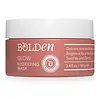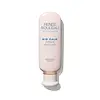What's inside
What's inside
 Key Ingredients
Key Ingredients

 Benefits
Benefits

 Concerns
Concerns

 Ingredients Side-by-side
Ingredients Side-by-side

Water
Skin ConditioningGlycerin
HumectantGlyceryl Acrylate/Acrylic Acid Copolymer
HumectantButylene Glycol
HumectantPentylene Glycol
Skin ConditioningCarbomer
Emulsion StabilisingSodium Hydroxide
BufferingCaramel
Cosmetic ColorantSodium Hyaluronate
HumectantAloe Barbadensis Leaf Juice
Skin ConditioningSpirulina Maxima Extract
SmoothingRosa Canina Fruit Extract
AstringentPanax Ginseng Extract
AntioxidantCentella Asiatica Extract
CleansingHibiscus Rosa-Sinensis Flower Extract
HumectantPhenoxyethanol
PreservativeCaprylyl Glycol
EmollientEthylhexylglycerin
Skin ConditioningHexylene Glycol
EmulsifyingParfum
MaskingWater, Glycerin, Glyceryl Acrylate/Acrylic Acid Copolymer, Butylene Glycol, Pentylene Glycol, Carbomer, Sodium Hydroxide, Caramel, Sodium Hyaluronate, Aloe Barbadensis Leaf Juice, Spirulina Maxima Extract, Rosa Canina Fruit Extract, Panax Ginseng Extract, Centella Asiatica Extract, Hibiscus Rosa-Sinensis Flower Extract, Phenoxyethanol, Caprylyl Glycol, Ethylhexylglycerin, Hexylene Glycol, Parfum
Water
Skin ConditioningAloe Barbadensis Leaf Juice
Skin ConditioningGlycereth-26
HumectantPolysorbate 20
EmulsifyingSodium Hyaluronate
HumectantHydrolyzed Glycosaminoglycans
HumectantCamellia Sinensis Leaf Extract
AntimicrobialAzulene
Skin ConditioningCentaurea Cyanus Flower Extract
AstringentSymphytum Officinale Leaf Extract
Skin ConditioningLavandula Angustifolia Oil
MaskingDisodium EDTA-Copper
AstringentCarbomer
Emulsion StabilisingXanthan Gum
EmulsifyingPhenoxyethanol
PreservativeCaprylyl Glycol
EmollientSodium Hydroxide
BufferingWater, Aloe Barbadensis Leaf Juice, Glycereth-26, Polysorbate 20, Sodium Hyaluronate, Hydrolyzed Glycosaminoglycans, Camellia Sinensis Leaf Extract, Azulene, Centaurea Cyanus Flower Extract, Symphytum Officinale Leaf Extract, Lavandula Angustifolia Oil, Disodium EDTA-Copper, Carbomer, Xanthan Gum, Phenoxyethanol, Caprylyl Glycol, Sodium Hydroxide
Ingredients Explained
These ingredients are found in both products.
Ingredients higher up in an ingredient list are typically present in a larger amount.
Aloe Barbadensis Leaf Juice comes from leaves of the aloe plant. Aloe Barbadensis Leaf Juice is best known for helping to soothe sunburns. It is also anti-inflammatory, moisturizing, antiseptic, and can help heal wounds.
Aloe is packed with good stuff including Vitamins A, C, and E. These vitamins are antioxidants, which help fight free-radicals and the damage they may cause. Free-radicals are molecules that may damage your skin cells, such as pollution.
Aloe Barbadensis Leaf Juice also contains sugars. These sugars come in the form of monosaccharides and polysaccharides, folic acid, and choline. These sugars are able to help bind moisture to skin.
It also contains minerals such as calcium, 12 anthraquinones, fatty acids, amino acids, and Vitamin B12.
Learn more about Aloe Barbadensis Leaf JuiceCaprylyl Glycol is a humectant and emollient, meaning it attracts and preserves moisture.
It is a common ingredient in many products, especially those designed to hydrate skin. The primary benefits are retaining moisture, skin softening, and promoting a healthy skin barrier.
Though Caprylyl Glycol is an alcohol derived from fatty acids, it is not the kind that can dry out skin.
This ingredient is also used as a preservative to extend the life of products. It has slight antimicrobial properties.
Learn more about Caprylyl GlycolCarbomer is a polymer of acrylic acid. Its main role is to create a gel consistency.
A high amount of carbomer can cause pilling or balling up of products. Don't worry, most products contain 1% or less of carbomer.
Phenoxyethanol is a preservative that has germicide, antimicrobial, and aromatic properties. Studies show that phenoxyethanol can prevent microbial growth. By itself, it has a scent that is similar to that of a rose.
It's often used in formulations along with Caprylyl Glycol to preserve the shelf life of products.
Sodium Hyaluronate is hyaluronic acid's salt form. It is commonly derived from the sodium salt of hyaluronic acid.
Like hyaluronic acid, it is great at holding water and acts as a humectant. This makes it a great skin hydrating ingredient.
Sodium Hyaluronate is naturally occurring in our bodies and is mostly found in eye fluid and joints.
These are some other common types of Hyaluronic Acid:
Learn more about Sodium HyaluronateSodium Hydroxide is also known as lye or caustic soda. It is used to adjust the pH of products; many ingredients require a specific pH to be effective.
In small amounts, sodium hydroxide is considered safe to use. However, large amounts may cause chemical burns due to its high alkaline.
Your skin has a natural pH and acid mantle. This acid mantle helps prevent harmful bacteria from breaking through. The acid mantle also helps keep your skin hydrated.
"Alkaline" refers to a high pH level. A low pH level would be considered acidic.
Learn more about Sodium HydroxideWater. It's the most common cosmetic ingredient of all. You'll usually see it at the top of ingredient lists, meaning that it makes up the largest part of the product.
So why is it so popular? Water most often acts as a solvent - this means that it helps dissolve other ingredients into the formulation.
You'll also recognize water as that liquid we all need to stay alive. If you see this, drink a glass of water. Stay hydrated!
Learn more about Water